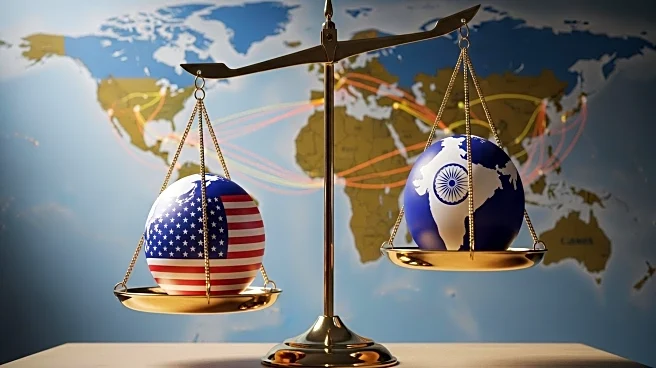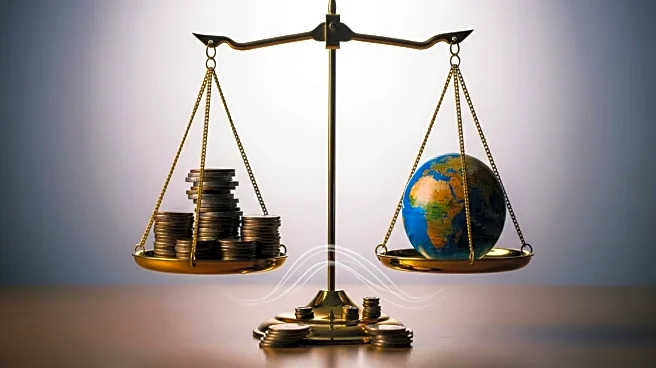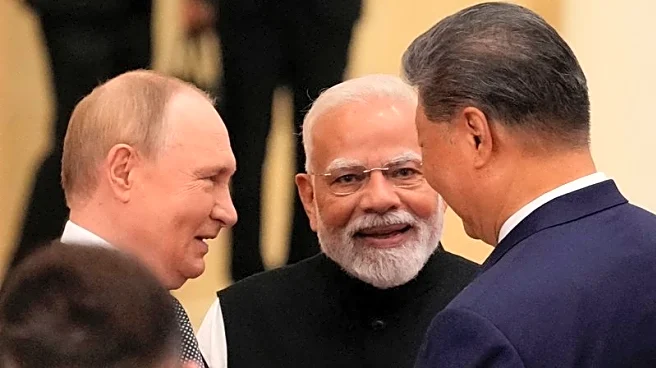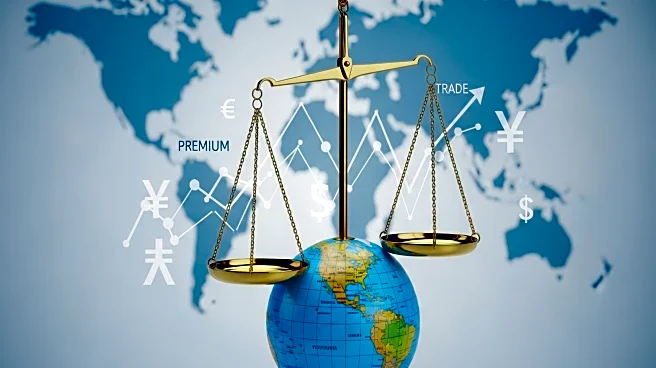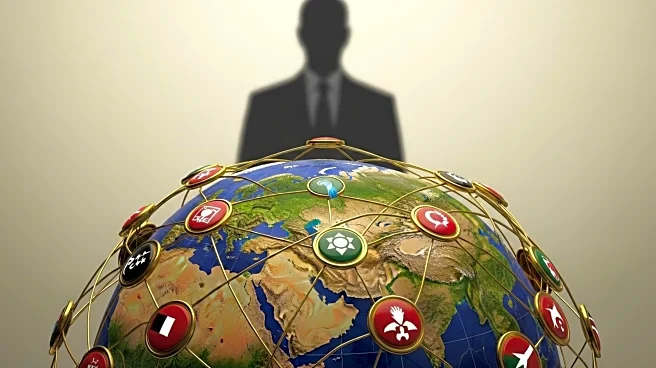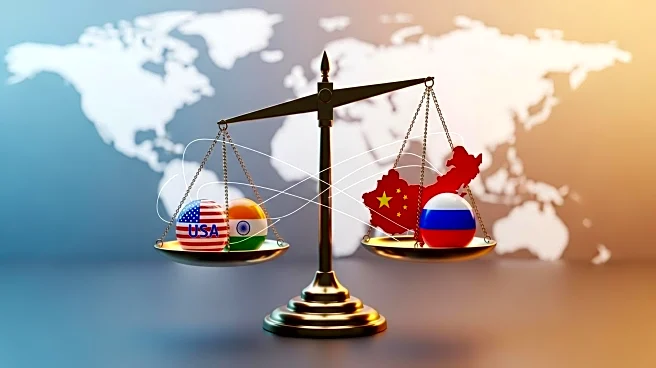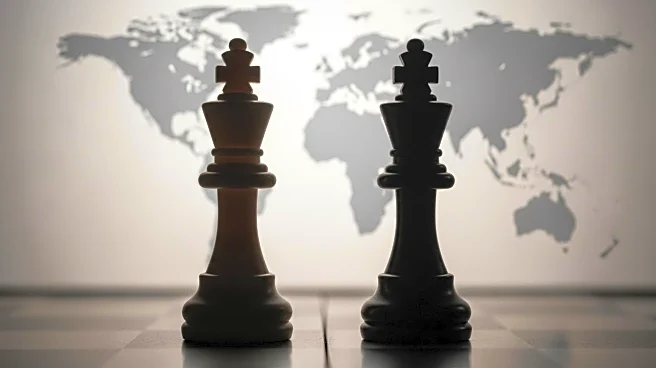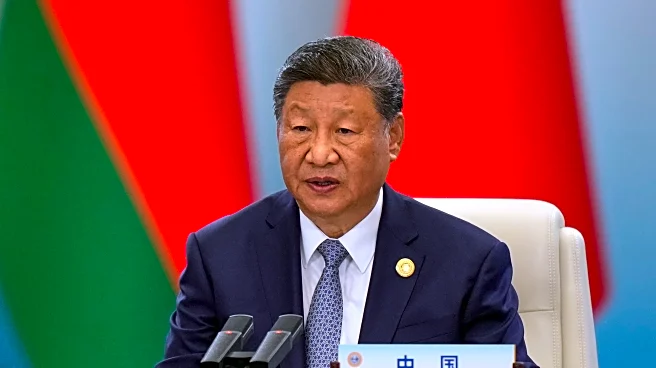What is the story about?
What's Happening?
President Trump has implemented 50% tariffs on Indian goods, effective from August 27. This move has led to significant economic concerns for India, as the tariffs could potentially reduce India's GDP by 0.8% and decrease exports to the U.S. by $35 billion this financial year. The tariffs have strained trade negotiations between the two countries, with India exploring geopolitical strategies to mitigate the impact. Prime Minister Narendra Modi has sought to strengthen ties with China and Russia, while domestically announcing support for exporters and potential tax cuts. Experts suggest that direct retaliation may not be in India's best interest due to its dependency on U.S. trade.
Why It's Important?
The tariffs imposed by President Trump could have substantial repercussions for India's economy, affecting key industries such as textiles, gems, jewelry, and leather, potentially risking hundreds of thousands of jobs. The situation highlights the delicate balance India must maintain in its trade relations with the U.S., its largest trading partner. The geopolitical strategies employed by India, including engagement with other major economies like China and Russia, reflect a broader shift towards a multipolar world. The potential expansion of U.S. tariffs to services and digital trade could further impact India's economy, emphasizing the need for careful diplomatic navigation.
What's Next?
India is advised to wait at least six months to assess the full impact of the U.S. tariffs and any additional measures that may follow. The unpredictability of President Trump's administration necessitates a cautious approach, avoiding immediate retaliation. India must also consider the potential changes to H1B non-immigrant visas, which could affect its workforce in the U.S. The ongoing trade tensions may lead to further diplomatic engagements and strategic alliances with other global powers.
AI Generated Content
Do you find this article useful?




